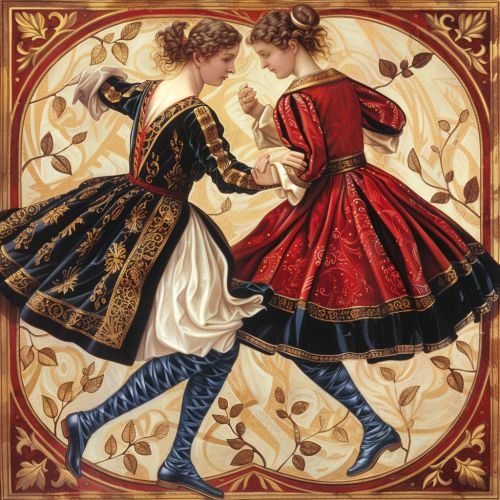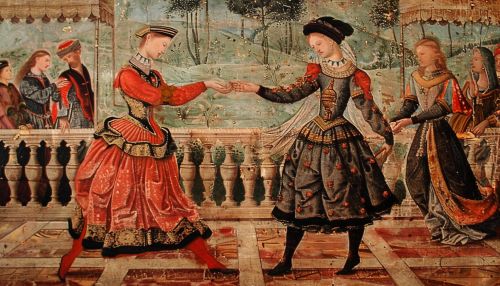Galliard
History
The renaissance period saw the emergence of a dance form known as the Galliard. The Galliard was a form of Renaissance dance and music popular all over Europe in the 16th century. It originated in Italy and later spread to France, England, and other parts of Europe. The dance was known for its lively, leaping steps and energetic music, often performed at courtly social gatherings.


Characteristics
The Galliard was a lively, athletic dance, characterized by leaps, jumps, hops, and other vigorous movements. It was typically performed by couples, who would dance in sync with each other, often mirroring each other's movements. The dance was usually performed to a fast-paced, upbeat piece of music, typically played on instruments such as the lute, harpsichord, or viol.
Music
The music for the Galliard was typically written in a fast, triple meter, with a distinctive rhythm that often featured dotted rhythms and syncopations. The music was usually composed in a binary form, with two contrasting sections, each of which was repeated. The melody was often highly ornamented, with trills, mordents, and other decorative notes adding to the complexity and richness of the music.
Performance
The Galliard was typically performed at courtly social gatherings, where it was often used as a display of skill and athleticism. Dancers would strive to outdo each other with their leaps and jumps, and the dance often included elements of improvisation, with dancers adding their own flourishes and variations to the basic steps. The dance was also often used as a finale to a suite of dances, providing a lively and energetic conclusion to the performance.
Influence and Legacy
The Galliard had a significant influence on the development of dance and music in Europe. It was one of the first dances to be notated in a detailed way, providing a valuable record of Renaissance dance practices. The music for the Galliard also had a significant impact, influencing the development of instrumental music and paving the way for the emergence of the Baroque style.
The Galliard also had a lasting legacy, with elements of the dance and its music surviving in various forms. For example, the lively, leaping steps of the Galliard can be seen in later dances such as the jig, while the distinctive rhythm and melody of the Galliard music can be heard in later genres such as the gigue.
